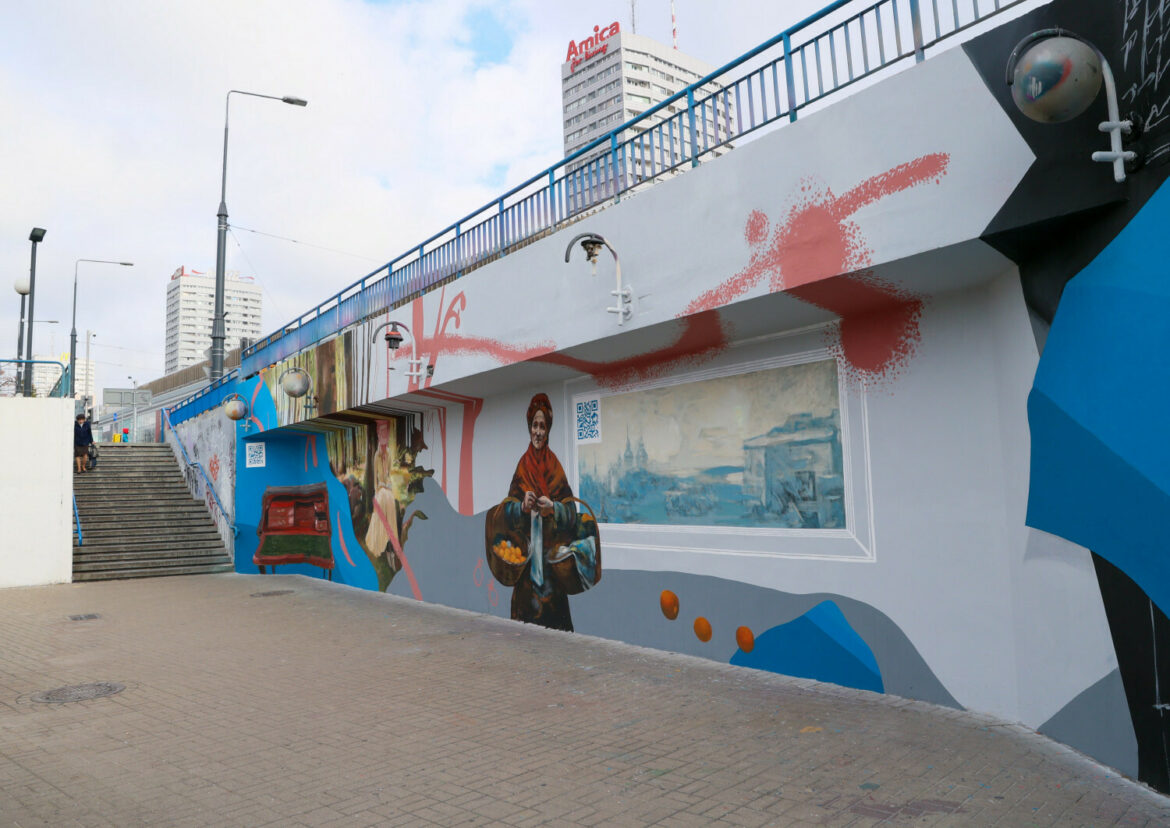Works of art that disappeared from Warsaw’s collections due to World War II and have been recovered in recent years thanks to the efforts of the Ministry of Culture and National Heritage can be seen on a mural at the entrance to the Centrum Metro in Warsaw.
The mural presents works of art and museum objects presented in a modern and attractive form. It is accompanied by an app, which allows visitors to see further works of art in augmented reality after scanning the QR codes from the mural, and the characters and objects from the painting come to life. The mural can be viewed until 4 December 2022.
In recent years, more than 600 individual museum objects have been returned to Polish collections thanks to restitution efforts led by the Ministry of Culture. There are currently 130 restitution cases underway in 15 countries around the world, because of which it is likely that more lost works will soon be returned to Poland.
Among the recovered objects that can be seen on the mural and in the accompanying app are: a collection of zoological specimens and natural history books from the pre-war collection of the State Zoological Museum in Warsaw, recovered in 2022, Teodor Axentowicz’s pastel ‘Lady in peacock feathers’ recovered in 2021, Marcin Zaleski’s painting ‘Interior of the Milan Cathedral’ recovered in 2019, Melchior Geldorp’s painting ‘Portrait of a lady’ recovered in 2018 or Aleksander Gierymski’s painting ‘Jewess with oranges’ recovered in 2011.
However, the objects recovered are still a fraction of what Poland lost as a result of the Second World War and the plundering of Polish public, private and church collections by the German and Soviet occupiers. The database of war losses kept at the Ministry of Culture and National Heritage contains some 66,000 records, while Poland lost more than 516,000 works of art, according to post-war estimates.
Adrian Andrzejewski





